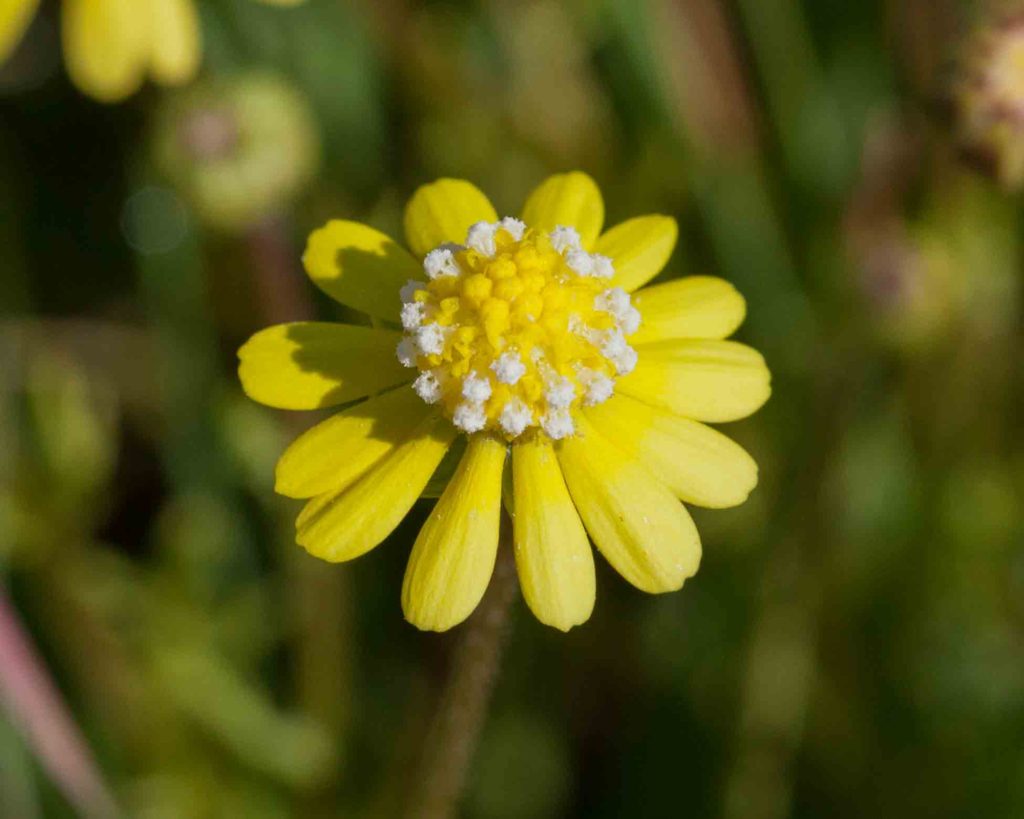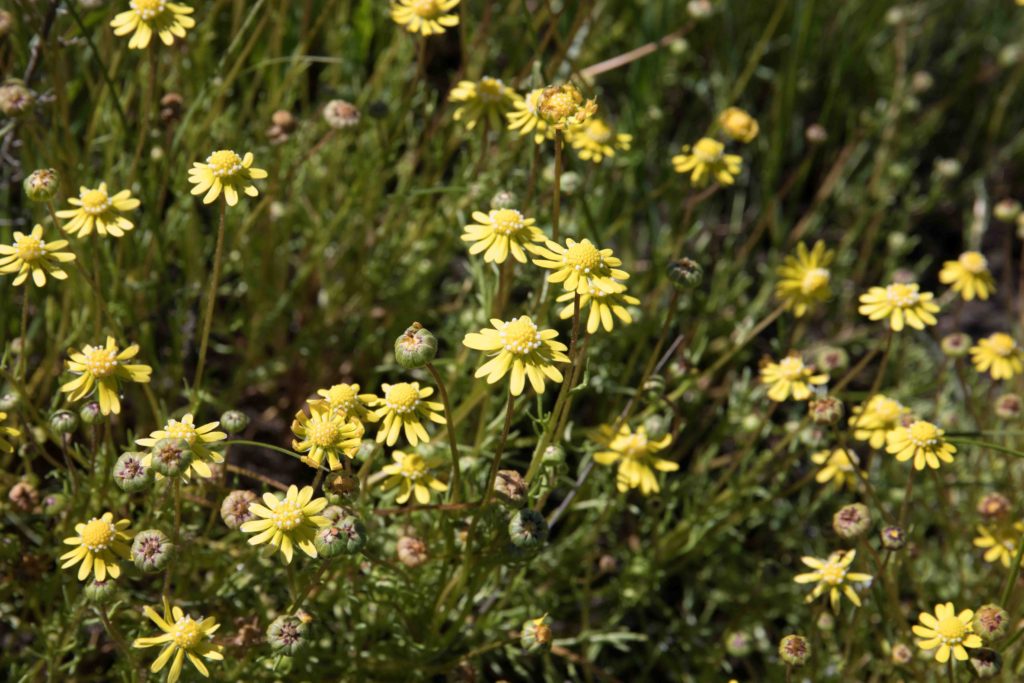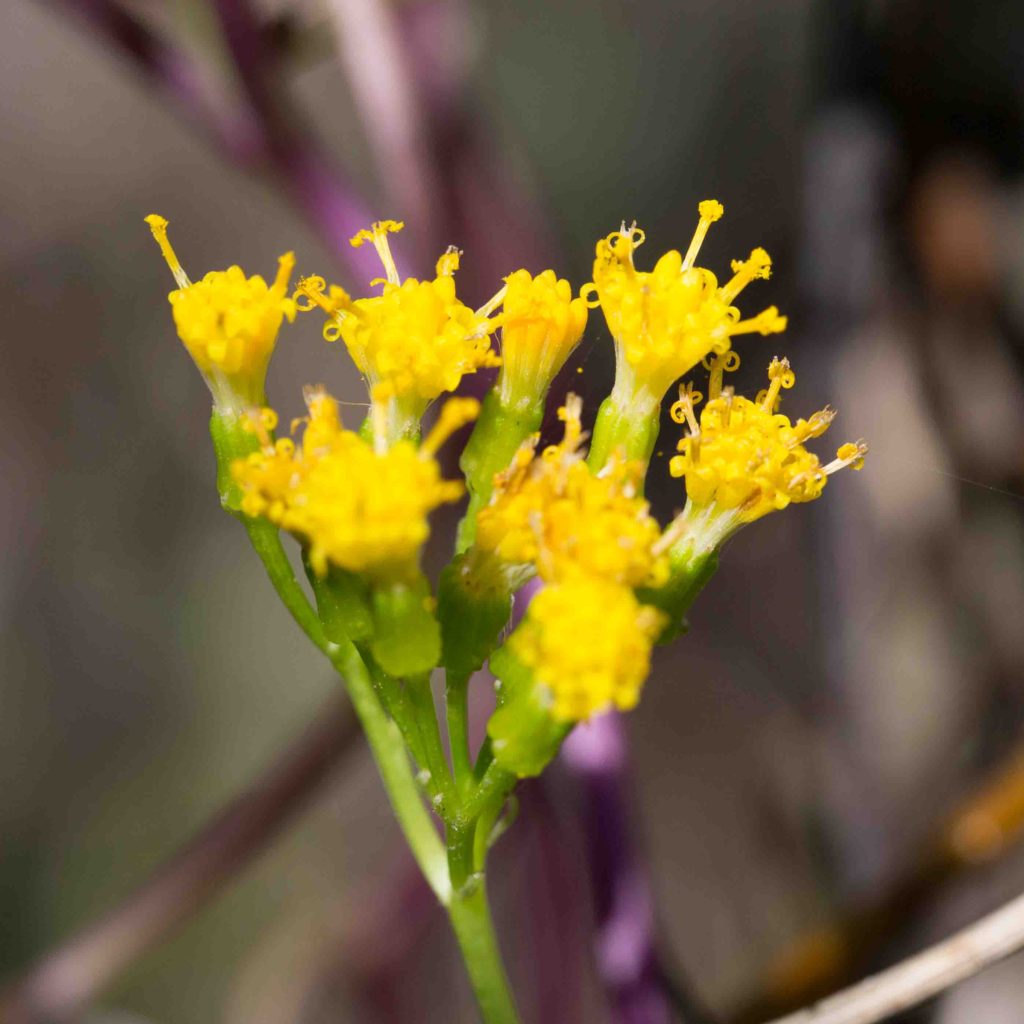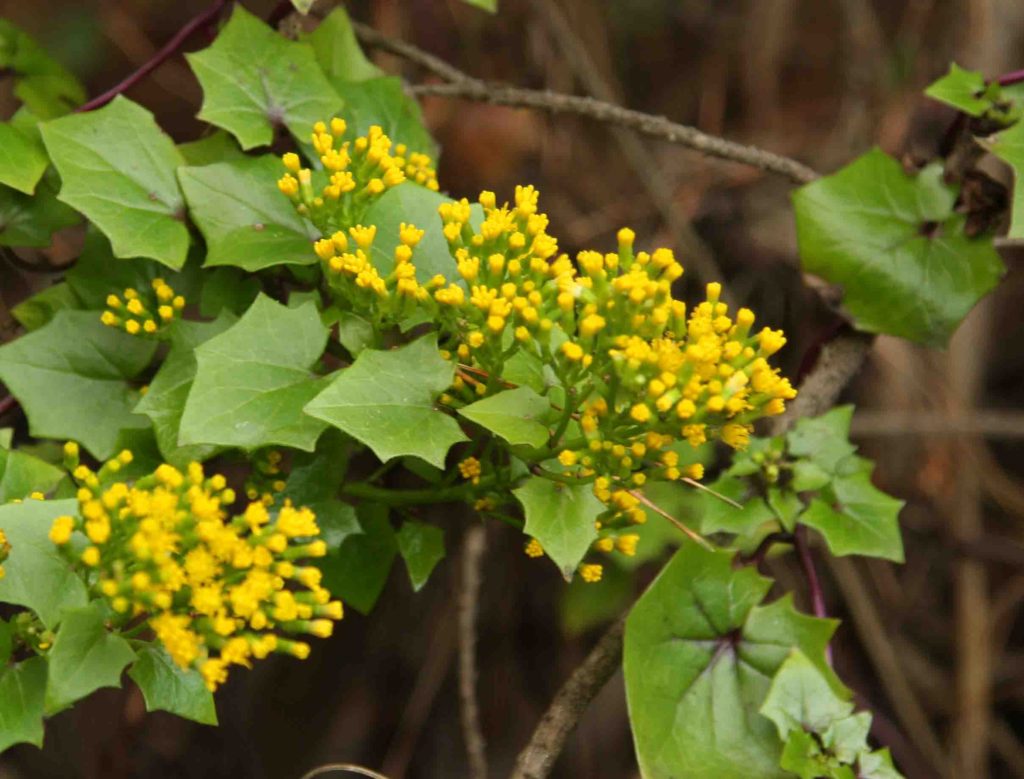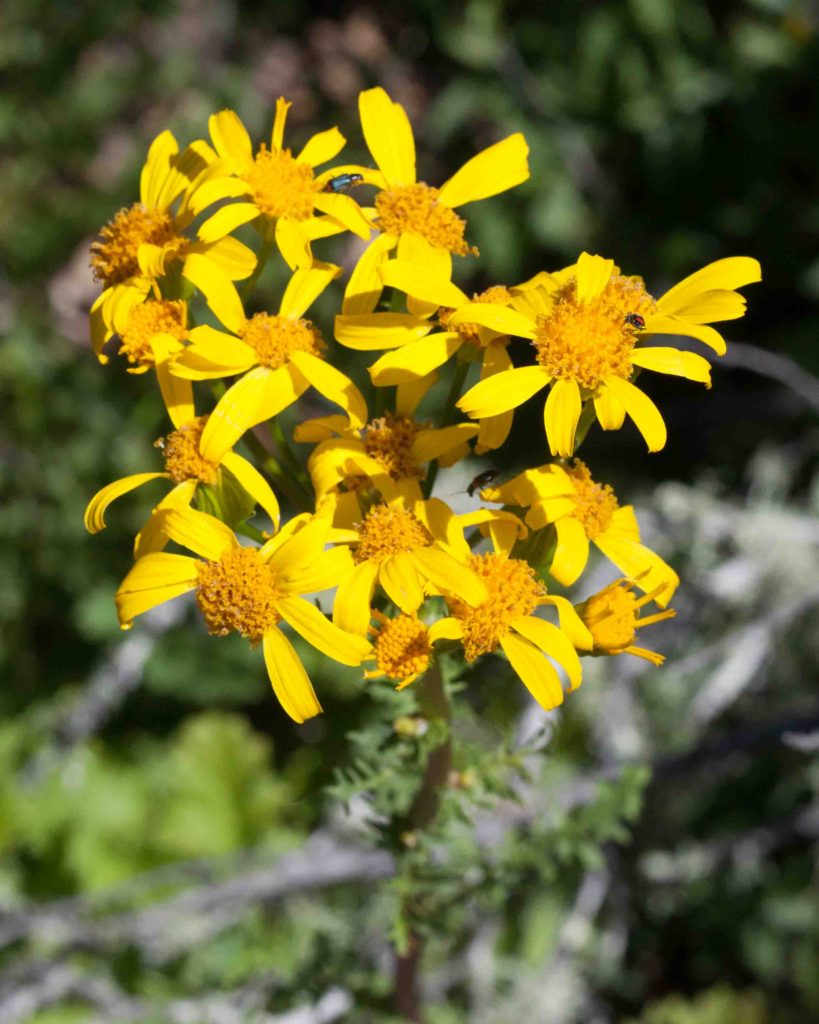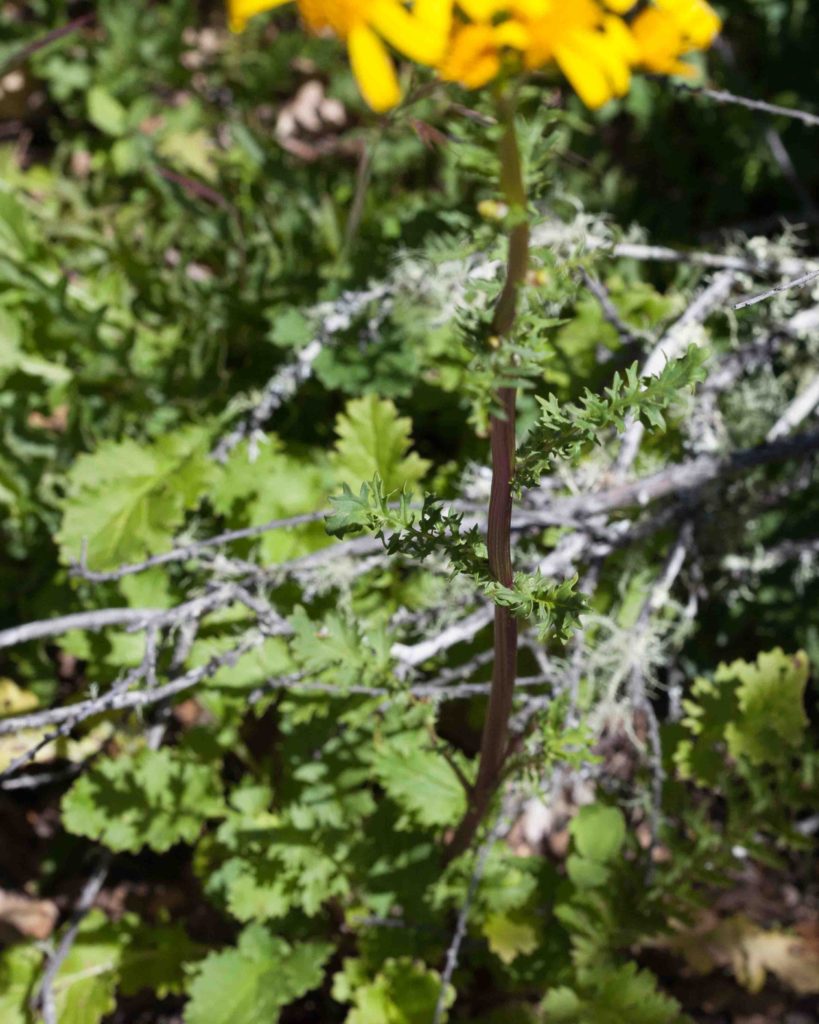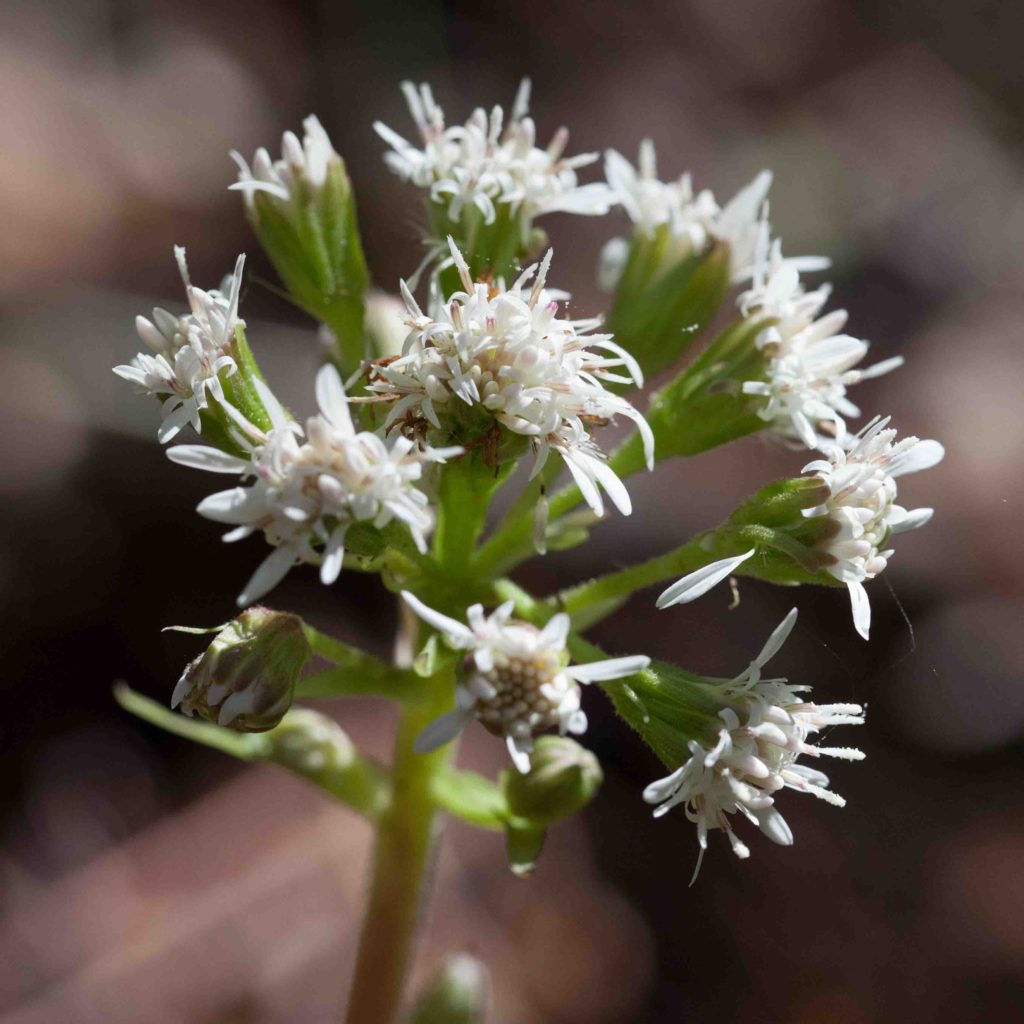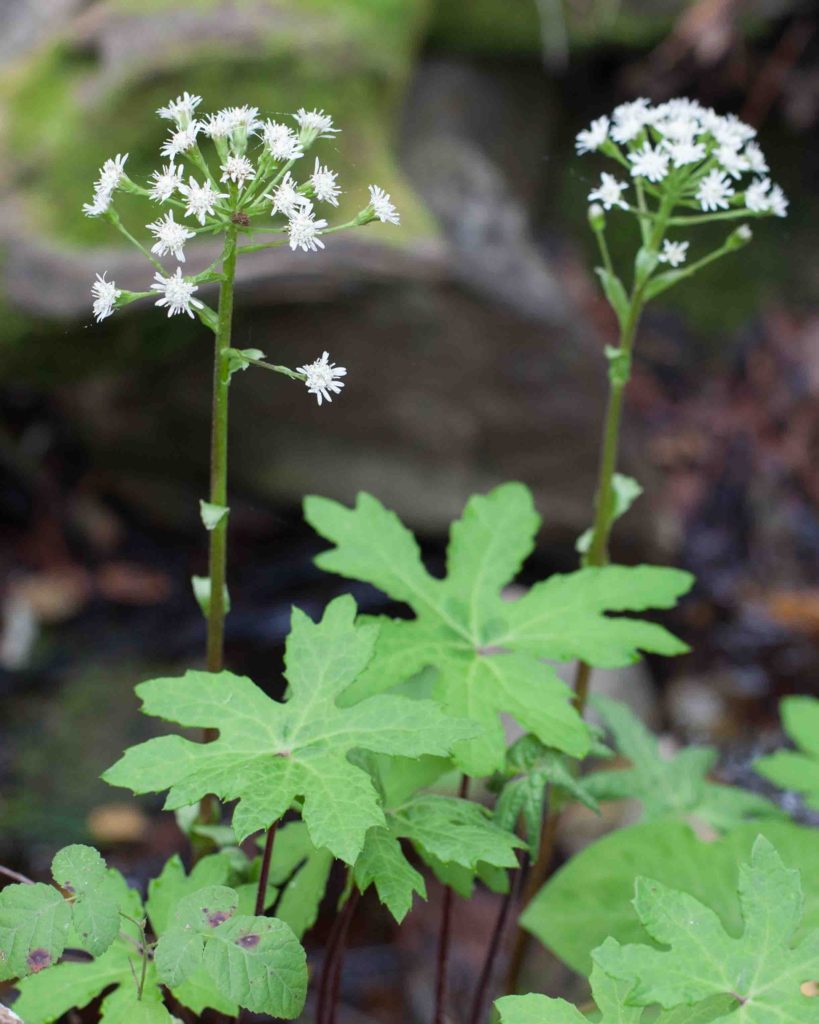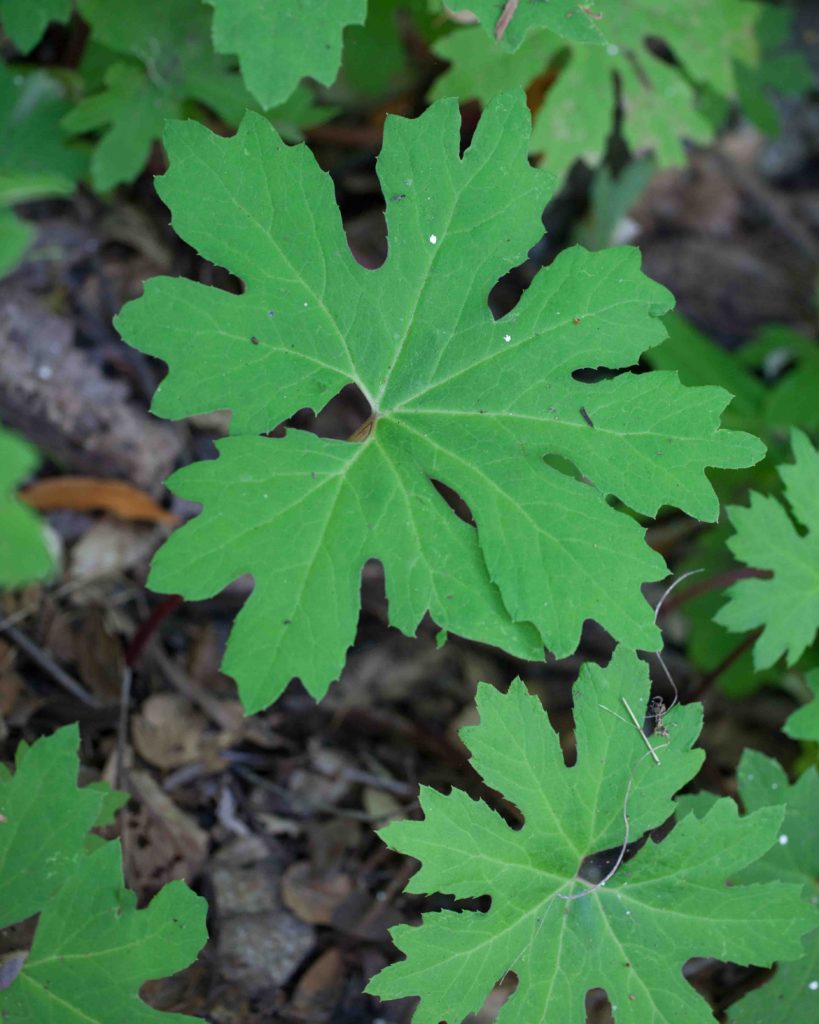Asteraceae: Sunflower Family – Senecio Tribe: miscellaneous
The Sunflower family is a very large family with over 25,000 members. Botanists subdivide the family into a number of tribes, of which 14 are present in Monterey County. The Senecio tribe comprises a mixture of obviously daisy-like flowers, and others that don’t look like sunflowers. This page includes tribe members except for the genus Senecio (which has its own page). Here are some very attractive natives, and an aggressive alien invasive.
Common Blennosperma – Blennosperma nanum var. nanum
Blooms:
Jan–May
Plant Height:
4–25 cm
Flower Size:
Small
Origin:
Native
Habitat:
Open grassy areas, often at margins of vernal pools below 800 m
Notes:
A small annual plant, with a single erect, branched stem. The leaves are alternate, mostly sessile; the blades pinnately divided into 2–15 linear lobes. There are 5–13 yellow ray flowers (occasionally white) with a yellow stigma, and 20–60 disk flowers with white anthers. Uncommon, most easily seen just inside the Jolon entrance to Fort Hunter Liggett.
Cape Ivy – Delairea odorata
Blooms:
Dec–Mar
Plant Height:
Vine-like
Flower Size:
Medium cluster
Origin:
South Africa
Invasive?
Yes – high
Habitat
Moist places along the coast
Notes:
Like true ivy, this is a vine that climbs over trees and shrubs. Leaves are ivy-like and palmately lobed. Inflorescences have disk flowers only. It is highly invasive, difficult to eradicate, and quite common in Big Sur and other parts of Coastal California. Sometime called German Ivy, although Cape Ivy is a more appropriate name given its South African origin.
Brewer’s Senecio – Packera breweri
Blooms:
Apr–June
Plant Height:
30–75 cm
Flower Size:
Medium
Origin:
Native
Habitat:
Woody or brushy slopes
Notes:
Multiple flower heads with strap-shaped ray flowers are in clusters at the tip of a single stem. The leaves are pinnate, the basal leaves being larger and more deeply dissected than those on the stem.
Coltsfoot – Petasites frigidus var. palmatus
Blooms:
Jan–Apr
Plant Height:
20–80 cm
Flower Size:
Medium cluster
Origin:
Native
Habitat:
Damp areas near streambeds
Notes:
This plant is immediately recognizable by its large, palmate leaves. It produces a single peduncle with a terminal cluster of small white inflorescences. It has mostly disk flowers, although a few ray flowers may be present. The plant is more or less dioecious, the disk flowers being predominantly staminate (male). The peduncle and flowers appear in early spring before the leaves.
